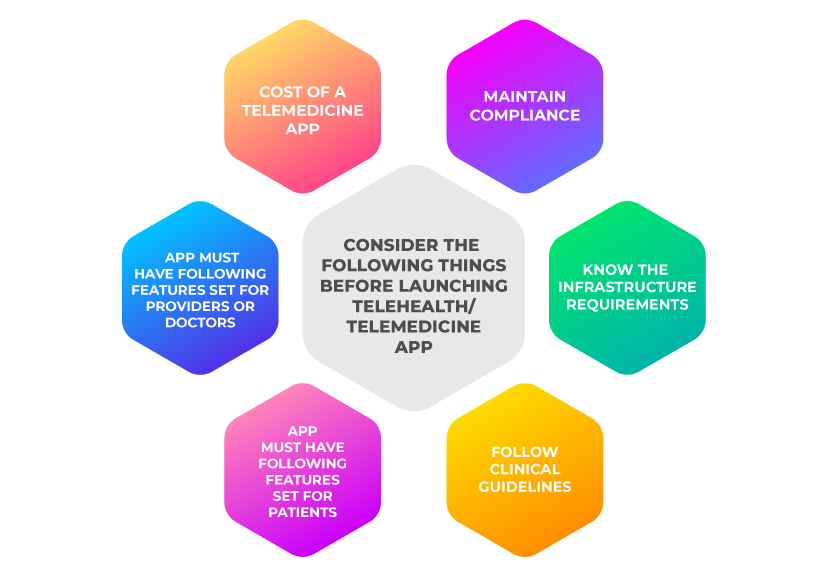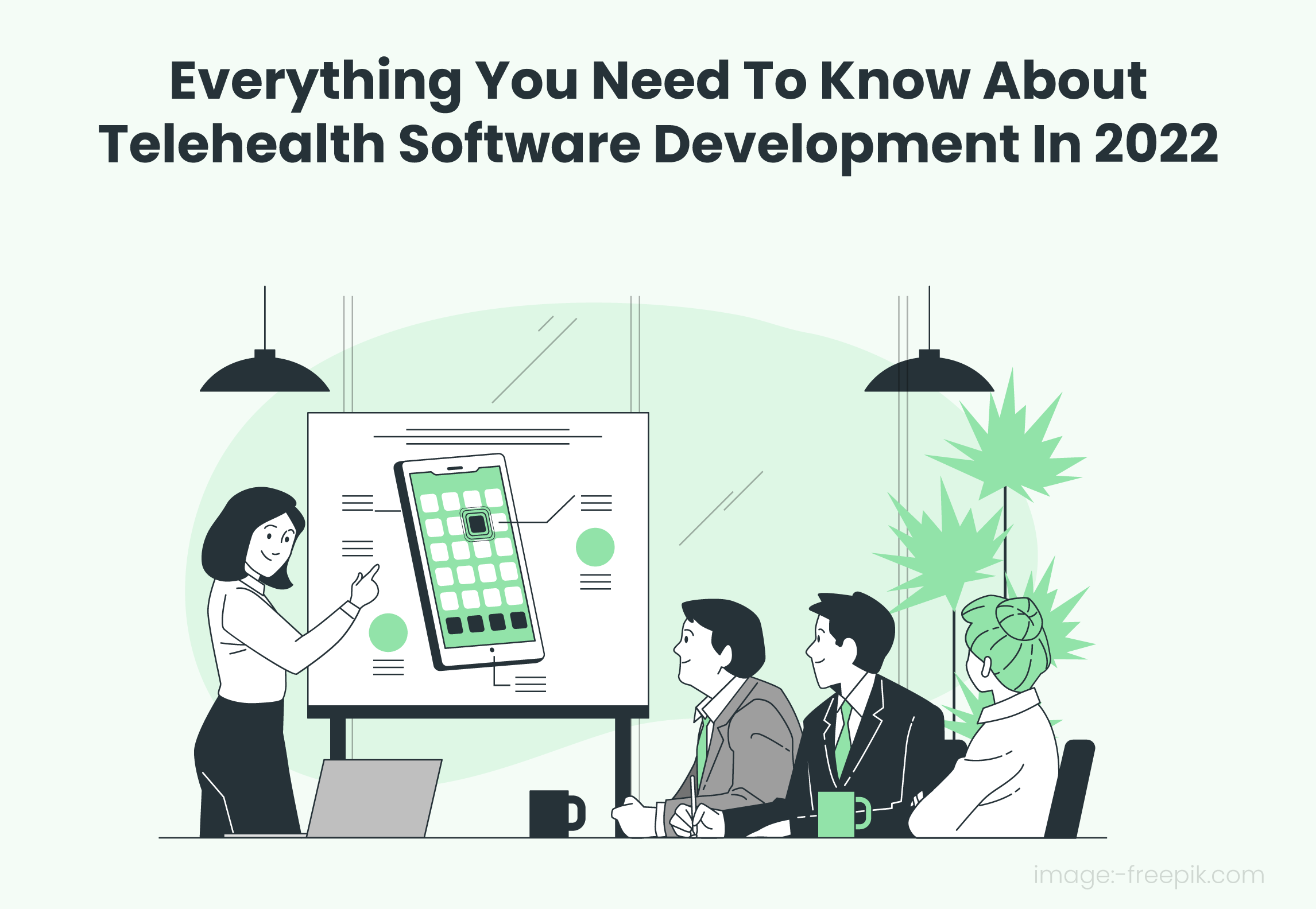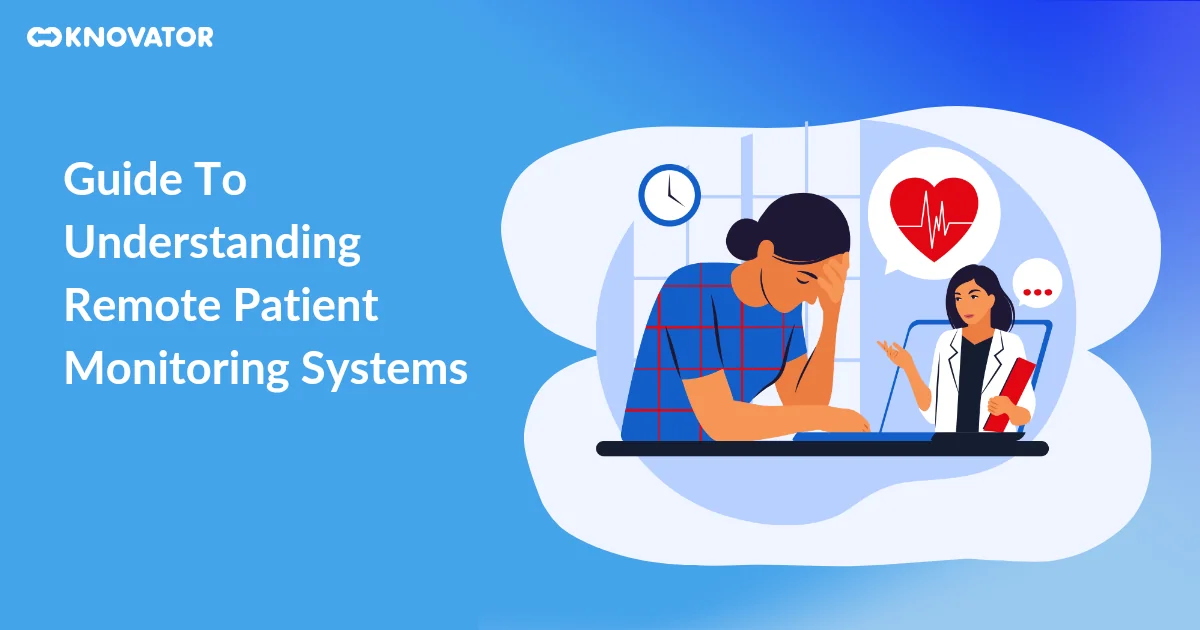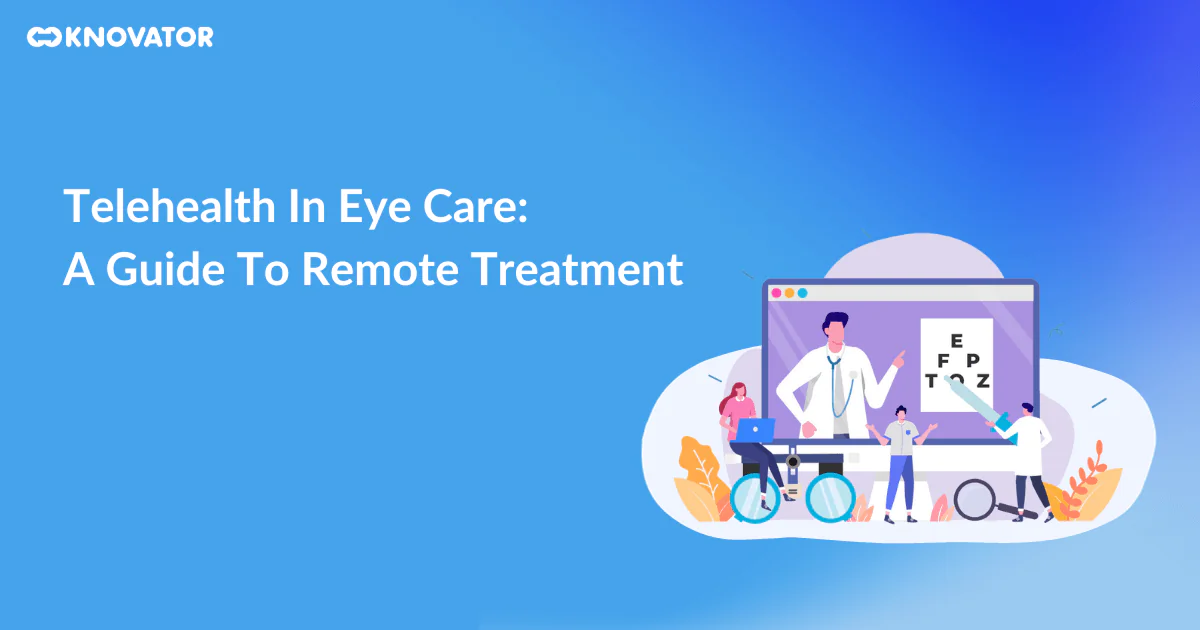We all know that telemedicine has gained popularity and is a great option over legacy in-person care services. The last 24 months have pushed the envelope and forced the world to start adopting telemedicine technology.
If you run a healthcare business and are looking to hire a telehealth software development company to start your own telehealth/telemedicine business or integrate telemedicine software in your healthcare solution suite, you need to consider the following things before launching your app. But before that, you need to know the things that are important to launch your telehealth startup effectively.
So, let’s Begin!

1. Maintain compliance
Know the compliance and regulations for the healthcare features offered to patients and providers. You need to combine the local laws and healthcare regulations in mind while developing a compliance strategy.
In the beginning, you can hire a compliance officer and prepare your compliance features and policy. Post that, you need to develop a process that will include yearly audit and certification of resources, clinical team, infrastructure, apps, and documentation. Your standard compliance suite must include HIPAA, PHI, PII, Health Information Technology for Economic and Clinical Health (HITECH), and ISO SOC audits.
Moreover, local regulations vary, and you can generally divide them into the following categories:
- Few states or most of them in the USA offer reimbursements for telemedicine
- Few states require a pre-existing relationship between a doctor and patient
- Licensing and practice requirements also vary
- Written consent is required from patients in a few states like an authorization form
- Many states are issuing emergency license waivers to out-of-practice doctors due to the rise in demand since Covid-19
- Cross-state licensing, issuing e-prescriptions, expanding patient’s medical coverage with or without a patient and doctor/provider relationship
You must bookmark the state regulations site and check them regularly because Covid-19 has forced many states to review their healthcare compliance regulations and laws as per the changing scenarios.
State-run boards comply with many local and international bodies like the Centers for Medicare and Medicaid Services (CMS) for reimbursements in many federal programs. Integrated telehealth solutions must adhere to all the regulations as discussed in this section.
In March 2020, regulatory agencies decided to reassess the laws and regulations and it was decided that the healthcare providers should get some flexibility in the HIPAA guidelines to attend to more patients and meet the increasing demands of Covid-19.
These regulations are prescribed by the Health and Human Services Department (HHS) through an Enforcement Discretion notification concerning remote telecommunications between provider and patient.
Don’t know which all compliances should your healthcare solution follow? Schedule a 30 minute free demo to know more about healthcare IT regulatory compliances.
2. Know the infrastructure requirements
While developing your integrated telehealth solution, it is important to know the infrastructure requirements of your telemedicine software suite. You need to keep in mind that requirements change gradually based on usage, traffic, features, and multimedia features in the app.
Besides having robust hardware, and network, your application code, and queries must be of the highest quality and should be properly verified for out-of-memory scenarios that can cause the application to break and make it sound like an infrastructure issue.
A telehealth software development company assesses the technology infrastructure requirements before developing your healthcare app.
If you have the infrastructure to meet your business requirements and provide training to technical and business staff on best practices and troubleshooting techniques during virtual consultations, you can run a successful healthcare technology business in the telemedicine segment. Moreover, make sure to have the right protocols and healthcare compliance in place.
- Accessing hardware and software requirements:– Try to start with a telemedicine mobile app because patients and providers prefer mobile phones to do text, audio, and video consultation. In this case, your infrastructure requirements will be focused on mobile app requirements and back end server for storing the chat data successfully [should be accessible to patient and provider only].
- Networking requirements:– Deploying gaming and high-speed server on the cloud or on-premise is a must to ensure that your app is working fine without buffering in video consultations. You must have the facilities in your integrated telehealth solution to suggest users switch to a lite version if the app detects that network speed is slow at the patient or provider side.
- Remote patient monitoring and integration of medical devices:– Connected devices like a smartwatch, digital BP and sugar instruments, and other heavy-duty IoT devices regularly transmit vital data, and providers can keep a record of it and view it in the app for quick consultation as the need arises. The infrastructure must accommodate and seamlessly integrate these connected devices and provide accurate outputs all the time
- Technical support process and training:– You need to have automation to resolve repetitive tickets by guiding new hires with the troubleshooting steps and resolution or simply providing a guide to the users to check before contacting tech support. Your tech support should be 24×7 available through phone, chat, and email to ensure that your brand image is protected and customers are getting quick resolution.
You can hire a telehealth software development company like Knovator Technologies to develop your custom healthcare app. Alternatively, you can start with minimum viable product (MVP) development to gather user feedback before building a full-cycle healthcare app.
Also Read : Top Telehealth Business Ideas
3. Follow clinical guidelines
If you are offering integrated telehealth solutions, you must comply with all the clinical guidelines and documentation similar to in-person visit consultations. You must consider the below points:
- Licenses:– You must check the licensing requirements of the providers and the businesses. There are many sub-licensing requirements related to certain practices and specialties and you must check with the appropriate regulatory bodies before deciding to contract with a provider and allow them to give services in your app.
- Reimbursements:– Reimbursements are based on the CPT and HCPC codes of the medical services and medications and should be available for audit. Both patients and providers can get clear instructions on the prescriptions and invoicing mentioning that x services are eligible for reimbursements. Medicare and Medicaid are now covering major reimbursements and claim settlements for services offered through telemedicine practices.
Related : Telemedicine App Development Services
4. Your app must have the following features set for patients
- Your integrated telehealth solution should have a patient portal where they can create their account with mobile phones and upload their medical records and imaging. They can search for a doctor, book a consultation, and pay a fee. They can also receive prescriptions and subscribe for one-time or recurring medication refills. They can also order lab tests and share updated records with a doctor.
- Option to join text, audio, video chat and get timely reminders on follow-up visits in the app.
A telehealth software development company ensures that your healthcare app/website has all the basic features for patients and physicians.
Related : Patient Engagement Solutions
5. Your app must have the following features set for providers or doctors
- A portal for doctors where they can manage their practice, update their license and other certifications, receive consultation requests and accept, start a video, audio chat and review medical records, and issue e-prescriptions.
- Manage their schedule and receive timely updates on vitals, appointments, and follow-ups.
Additionally, every integrated telehealth solution should be integrated with an online payment gateway or processor like Stripe, PayPal and more.
6. Cost of a telemedicine app
The cost of a telemedicine app starts from $20,000 and can go to $125,000 and more based on the features. While working with a telemedicine app development company, you can start with the basic patient and provider features with video and audio chat and can then plan future iterations without budget issues.
You can launch MVP with the help of Knovator Technologies and then get feedback, generate revenue, and/or receive funding to build more features.
What is the future of telemedicine and how Knovator Technologies – a seasoned telehealth software development company can help?
The future of telemedicine is bright and every regulatory body and the government is working hard to resolve administrative barriers and strengthen the telemedicine business. As a healthcare business, you can always provide a great UI/UX experience and respect the guidelines issued by the local regulatory bodies to run a successful business.
If you want to get more advice and consultation regarding integrated telehealth solutions, get in touch with Knovator Technologies today.
Knovator Technologies has extensive experience in building healthcare IT solutions for businesses across the globe.
Let Knovator Technologies assess your regulatory compliance and IT infrastructure needs. We are your integrated telehealth solutions development partners.










